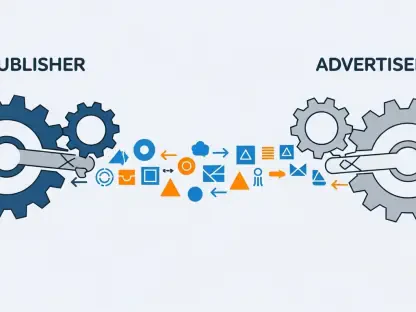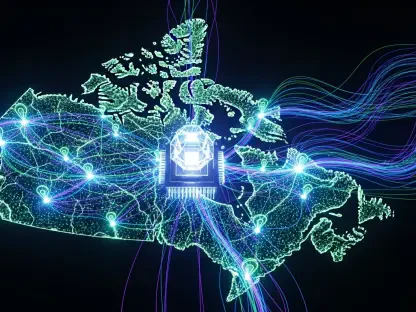Listen to the Article
Telecom networks underpin modern business, yet they draw enormous amounts of electricity and generate mountains of e‑waste. Extreme weather regularly disrupts cables and data centers, and energy crises highlight the fragility of networks reliant on fossil fuels.
In this environment, B2B customers increasingly ask, how green is your network? Regulators are introducing strict reporting requirements, investors tie financing to climate performance, and sustainability metrics are becoming part of every telecom request for proposal.
The operators that can demonstrate credible progress toward net-zero emissions and circularity will gain a commercial edge; those that cannot risk being left behind.
Rising Expectations
A wave of policies and market signals is pushing sustainability to the forefront. The European Union’s Corporate Sustainability Reporting Directive and similar laws in the United States require detailed climate disclosures. Europe’s Joint Research Centre is drafting a voluntary Code of Conduct for sustainable telecoms to develop common indicators for energy and environmental impact. Their research highlights that digital connectivity saves energy across the broader economy, yet warns that network power consumption is still increasing. To reverse this trend, telecoms will need to adopt shared metrics and best practices.
The pressure is not only regulatory. Investors and lenders now routinely ask operators about their decarbonization plans, and interest rates increasingly reflect sustainability risk. Employees, especially younger workers, tend to prefer joining companies that take their environmental responsibilities seriously. Analysts note that energy price spikes in recent years have highlighted the vulnerability of legacy networks built on cheap fossil energy, prompting management teams to reevaluate their energy procurement strategies.
Greening the Network
Industry observers rank sustainability as one of the top telecom themes for 2025. Operators are committing to sourcing 50–100% renewable power, phasing out copper and 3G networks, and upgrading to fiber and 5G networks. Modern 5G equipment can enter sleep mode when traffic dips, cutting energy use, and teams are designing hardware for longevity and recycling. These steps have improved the sector’s sustainability scores and, by enabling more remote work, have also reduced emissions in other industries.
Telecom companies are also attacking plastic and e‑waste. By optimizing resource use, designing products for longevity, and recycling electronics, operators shrink their environmental footprint. Many firms are adopting circular economy dashboards and reporting frameworks to measure progress. The benefits extend beyond the sector: by facilitating teleworking and cloud services, telecom networks help companies in transport, manufacturing, and finance avoid millions of kilometers of commuting and business travel.
The circular economy is equally important. When 2G and 3G networks are retired, recovered equipment can be resold, recouping around 30% of its original value. Refurbished gear costs 40–90% less than new and carries a much smaller carbon footprint. Companies like Orange and BT aim to source significant shares of spare parts from secondary markets. Deutsche Telekom notes that global e‑waste hit 62 million tons in 2022 – enough to fill over a million lorries – and has pledged to make all its network equipment recyclable by 2030. It already achieves zero waste to landfill in Europe.
Network shutdowns present both challenges and opportunities. According to The Fast Mode, global 2G/3G sunsets are expected to peak in 2025. These shutdowns will unlock a flood of equipment, and operators who recover, refurbish, and resell hardware can turn decommissioning costs into revenues. Some forward‑looking operators plan to source up to 20% of their spare parts from the secondary market by 2026. Supply chain disruptions during the COVID-19 pandemic forced companies to experiment with refurbished equipment, proving its reliability and cost-effectiveness; the success of those experiments is driving more permanent adoption.
Efficiency and Innovation
Electricity consumption dominates telecom emissions. GSMA Intelligence estimates that radio access networks consume 75–80% of network electricity, while core networks and data centers account for 10–15% of the total. Renewables supplied roughly 30% of telco energy in 2024; achieving net-zero by 2050 requires halving emissions in each of the next three decades. To get there, operators and vendors are developing technologies like Huawei’s “0 Bit 0 Watt” paradigm, which uses AI to shut down power amplifiers and cooling systems when no data is transmitted. Nokia’s sustainability‑by‑design principles for 6G focus on energy efficiency and greenhouse‑gas reduction. Machine learning and digital‑twin tools automate power savings and predictive maintenance.
Beyond Operations: Supply Chain and Scope 3
Telecom operators must also look beyond their own networks. While network energy use is critical, a comprehensive sustainability strategy addresses Scope 3 emissions – those arising from the purchase of goods and services and the use of sold products. For many telcos, these indirect emissions are several times larger than their operational footprint. Upstream, companies can collaborate with equipment vendors to design energy-efficient chipsets, utilize recycled materials, and minimize unnecessary packaging. Downstream, they can encourage customers to upgrade to more efficient routers and gateways, provide trade-in schemes for old devices, and embed power-saving software in customer premises equipment. Remote diagnostic and monitoring platforms – sometimes enhanced with augmented-reality interfaces – enable field technicians to assist clients remotely, eliminating the need for on-site visits, saving time and fuel, and reducing the number of journeys by hundreds of thousands. The Joint Research Centre’s analysis reveals that broadband connectivity, cloud telephony, and digital collaboration tools can lead to energy savings across the manufacturing, transport, and service industries. By communicating these multiplier effects, telecoms can demonstrate to enterprise buyers that choosing a green network contributes to their own emissions reductions and supports broader decarbonization goals.
Emerging standards reinforce these moves. Telecoms are beginning to measure key value indicators, such as minimized energy consumption and carbon footprint, alongside traditional KPIs. The SUSTAIN-6 G consortium, comprising European operators, vendors, and researchers, aims to integrate sustainability into the next generation of mobile networks. Analysts also expect 6G to integrate communications with smart energy grids, enabling efficient demand management. Sustainability Magazine notes that network cables and base stations are vulnerable to extreme weather conditions, and that future networks must be designed with resilience in mind.
Turning Obligation Into Opportunity
Sustainability is more than compliance – it’s fast becoming a sales advantage. RCR Wireless reports that customers are now including environmental criteria in their procurement documents. Tele2 plans to be net-zero by 2029 and is transitioning its vehicle fleet to electric and biofuels, while BT has reduced Scope 2 emissions by switching to renewable energy and implementing green tariffs. Orange utilized AI to automate customer-service processes, resulting in a 280,000 technician visit reduction and the associated emissions reduction. Such initiatives save money, appeal to environmentally conscious clients, and may lower financing costs.
To seize the opportunity, telecom providers should commit to science-based net-zero targets and report progress transparently; secure renewable energy and deploy energy-efficient RAN equipment; establish take-back and refurbishment programs for network hardware; choose recyclable materials and design for longevity; and participate in standards initiatives like SUSTAIN-6 G. Communicating these efforts in terms that resonate with enterprise customers – reduced downtime, lower operating costs, and support for their own climate goals – turns sustainability credentials into a differentiator.
Moving Forward…
Climate‑smart connectivity is quickly becoming the price of admission in B2B telecom. Regulation, market pressure and technological innovation are converging to make decarbonization and circularity non‑negotiable.
Operators that embed sustainability into their strategy and operations will not only meet compliance requirements; they will also build more resilient networks, reduce costs, and attract clients who prioritize environmental performance. The question is no longer whether to green the network, but how fast and how far. Those who move early stand to reap the commercial rewards.









